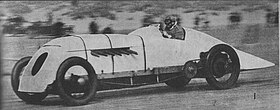
Pendine is a village and community in Carmarthenshire, Wales. Situated on the northern shore of Carmarthen Bay and bordered by the communities of Eglwyscummin and Llanddowror, the population at the 2011 census was 346.

The Arab was a high-performance English automobile designed by Reid Railton and manufactured in Letchworth, Hertfordshire, between 1926 and 1928. The factory had previously been used by the Phoenix car company.

Pendine Sands is a 7-mile (11 km) beach on the shores of Carmarthen Bay on the south coast of Wales. It stretches west to east from Gilman Point to Laugharne Sands. The village of Pendine is close to the western end of the beach.

John Godfrey Parry-Thomas was a Welsh engineer and motor-racing driver who at one time held the land speed record. He was the first driver to be killed in pursuit of the land speed record.

Chitty Bang Bang was the informal name of a number of celebrated British racing cars, built and raced by Count Louis Zborowski and his engineer Clive Gallop in the 1920s, which inspired the book, film and stage musical Chitty-Chitty-Bang-Bang.

The Sunbeam 1000 HP Mystery, or "The Slug", is a land speed record-breaking car built by the Sunbeam car company of Wolverhampton that was powered by two aircraft engines. It was the first car to travel at over 200 mph. The car's last run was a demonstration circuit at Brooklands, running at slow speed on only one engine. It is today on display at the National Motor Museum, Beaulieu.

The Sunbeam 350HP is an aero-engined car built by the Sunbeam company in 1920, the first of several land speed record-breaking cars with aircraft engines.
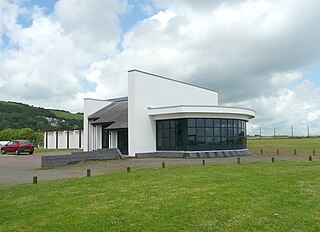
The Pendine Museum of Speed was dedicated to the use of Pendine Sands for land speed record attempts. It was opened in 1996 in the village of Pendine, on the south coast of Wales, and was owned and run by Carmarthenshire County Council. The museum received 33,522 visitors in 2009.

Patrixbourne is a village and former civil parish, now in the parish of Bekesbourne-with-Patrixbourne, in the Canterbury district in Kent, England. It is 3 miles (5 km) south-east of Canterbury. It is mostly taken up by agricultural hills and along with almost contiguous Bekesbourne. In 1931 the parish had a population of 245.
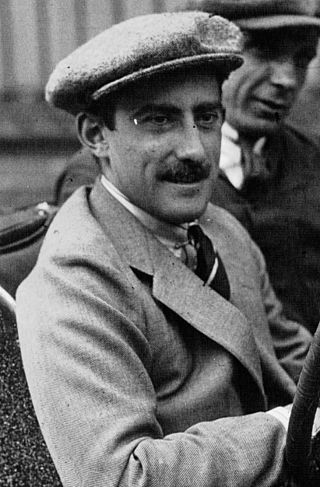
Louis Vorow Zborowski was a British racing driver and automobile engineer, best known for creating a series of aero-engined racing cars known as the "Chitty-Bang-Bangs", which provided the inspiration for Ian Fleming's children's story, Chitty Chitty Bang Bang and culminated in the "Higham Special" which, much modified in the hands of John Godfrey Parry Thomas, broke the World Land Speed Record 18 months after the death of its creator.
The British land speed record is the fastest land speed achieved by a vehicle in the United Kingdom, as opposed to one on water or in the air. It is standardised as the speed over a course of fixed length, averaged over two runs in opposite directions.
Owen Wyn Owen was a Welsh automobile restorer and mechanic. He lived in Capel Curig, Snowdonia. His working life was spent as a lecturer in engineering at Caernarfonshire Technical College in Bangor, but he is known for his outside achievements. He died in March 2012.

Ernest Arthur Douglas Eldridge was a British racing driver who broke the world land speed record in 1924. His was the last land speed record set on an open road.

The Sunbeam Silver Bullet was a world land speed record challenging automobile built by Sunbeam of Wolverhampton for Kaye Don in 1929.
Thomson & Taylor were a motor-racing engineering and car-building firm, based within the Brooklands race track. They were active between the wars and built several of the famous land speed record breaking cars of the day.
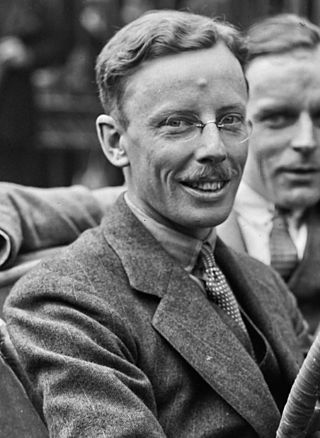
Colonel Reginald Clive Gallop was an engineer, racing driver and First World War pilot. He was one of the team which developed their first engine for Bentley Motors.
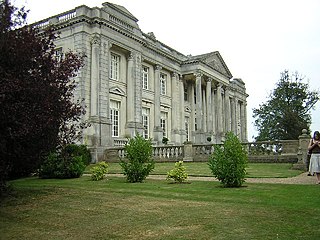
Higham Park is a Grade II* listed neoclassical style house and gardens, located at Bridge, Kent, 3 miles (4.8 km) south of Canterbury.

Jarvis & Sons Limited were South London-based motor dealers for Morris and MG, and latterly coachworks providing special bodies for various car chassis until after World War II.
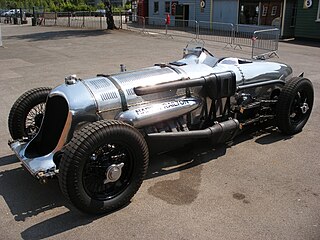
An aero-engined car is an automobile powered by an engine designed for aircraft use. Most such cars have been built for racing, and many have attempted to set world land speed records. While the practice of fitting cars with aircraft engines predates World War I by a few years, it was most popular in the interwar period between the world wars when military-surplus aircraft engines were readily available and used to power numerous high-performance racing cars. Initially powered by piston aircraft engines, a number of post-World War II aero-engined cars have been powered by aviation turbine and jet engines instead. Piston-engined, turbine-engined, and jet-engined cars have all set world land speed records. There have also been some non-racing automotive applications for aircraft engines, including production vehicles such as the Tucker 48 and prototypes such as the Chrysler Turbine Car, Fiat Turbina, and General Motors Firebirds. In the late 20th century and into the 21st century, there has also been a revival of interest in piston-powered aero-engined racing cars.
Bligh Bros. or Bligh Brothers of Canterbury was a British coachbuilder initially producing carriage and, in the 20th century, bodies for automobiles. Amongst the most famous creations by Bligh Brothers are the unique race cars known as Chitty Bang Bang, which inspired the book Chitty-Chitty-Bang-Bang by author Ian Fleming and the later film adaptation, Chitty Chitty Bang Bang.
